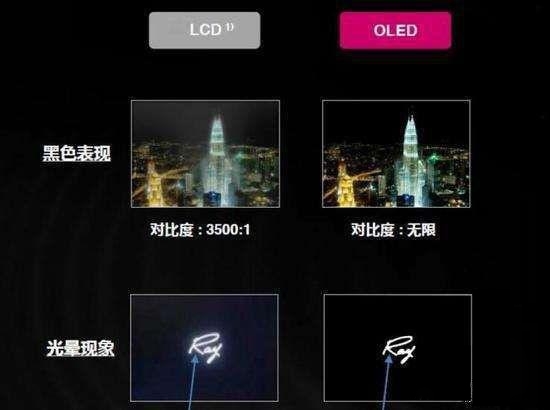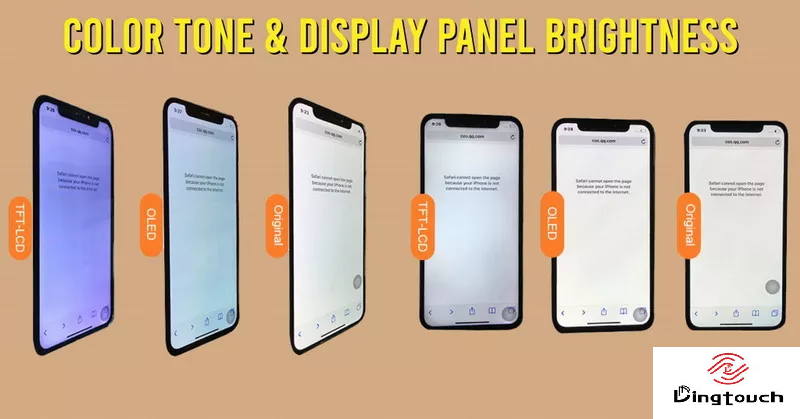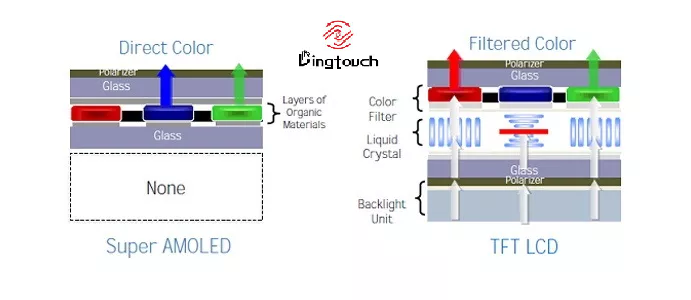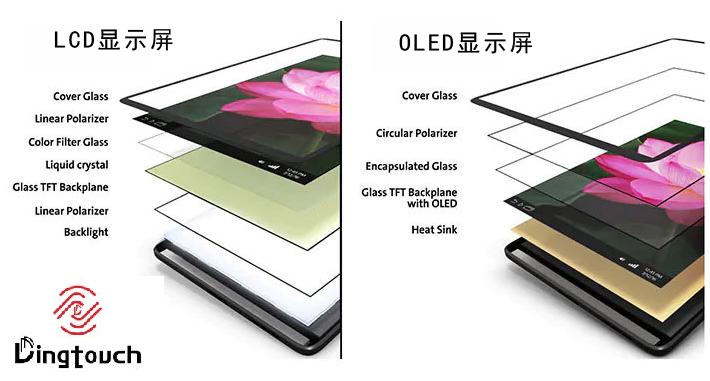News
TFT Vs LCD: Which Mobile Display Technology Offers The Best Performance?
TFT Vs LCD: Which Mobile Display Technology Offers The Best Performance?
Content Menu
● Understanding Display Technologies
>> Definition of LCD (Liquid Crystal Display)
>> Definition of TFT (Thin Film Transistor)
● Key Differences Between TFT and LCD
>> Refresh Rate
● Advantages and Disadvantages
>> Disadvantages of TFT Displays
>> Disadvantages of LCD Displays
● Applications of TFT and LCD Displays
>> Future Trends in Mobile Display Technology
>> 1. What is the main difference between TFT and LCD displays?
>> 2. Which display technology is better for gaming?
>> 3. Do TFT displays consume more power than standard LCD?
>> 4. Are TFT displays more expensive than standard LCD?
>> 5. Can I find budget smartphones with TFT displays?
Introduction
In the rapidly evolving world of mobile technology, the display is one of the most critical components that significantly influences user experience. With various display technologies available, two of the most prominent are TFT (Thin Film Transistor) and LCD (Liquid Crystal Display). Understanding the differences between these technologies is essential for consumers looking to make informed decisions about their mobile devices. This article delves into the intricacies of TFT and LCD displays, comparing their performance, advantages, and applications to determine which technology offers the best performance for mobile devices.
Understanding Display Technologies
Definition of LCD (Liquid Crystal Display)
Liquid Crystal Display (LCD) technology has been a staple in the display industry for decades. It utilizes liquid crystals sandwiched between two layers of glass or plastic. When an electric current passes through the liquid crystals, they align to allow varying amounts of light to pass through, creating images. LCDs are known for their energy efficiency and ability to produce sharp images, making them a popular choice for mobile devices.
Definition of TFT (Thin Film Transistor)
Thin Film Transistor (TFT) technology is a type of LCD that employs thin-film transistor technology to improve image quality and response times. Each pixel in a TFT display is controlled by its own transistor, allowing for faster refresh rates and better color reproduction. This technology enhances the overall performance of LCDs, making TFT displays a preferred choice for high-end mobile devices.
Key Differences Between TFT and LCD
Image Quality
When it comes to image quality, TFT displays generally outperform standard LCDs. TFT technology allows for better color reproduction and sharper images due to the individual control of each pixel. This results in more vibrant colors and improved contrast ratios, making TFT displays ideal for multimedia consumption, gaming, and other visually demanding applications.
Refresh Rate
The refresh rate is another critical factor that affects the performance of mobile displays. TFT displays typically have higher refresh rates compared to standard LCDs. A higher refresh rate means that the screen can update more frequently, resulting in smoother motion and reduced motion blur during fast-paced activities, such as gaming or watching videos. This advantage makes TFT displays more suitable for users who prioritize performance in dynamic content.
Power Consumption
Power consumption is a vital consideration for mobile devices, as it directly impacts battery life. Standard LCDs tend to consume less power than TFT displays, especially when displaying static images. However, TFT displays have made significant advancements in energy efficiency, and many modern TFT screens are designed to minimize power usage while maintaining high performance. Users should consider their usage patterns when evaluating the importance of power consumption in their display choice.

Advantages and Disadvantages
Advantages of TFT Displays
1. Better Image Quality: TFT displays provide superior color accuracy and contrast, enhancing the overall viewing experience.
2. Faster Response Times: The individual control of pixels allows for quicker response times, reducing motion blur and ghosting effects.
3. Wider Viewing Angles: TFT technology often results in better viewing angles compared to standard LCDs, allowing users to view the screen from various positions without significant color distortion.
Disadvantages of TFT Displays
1. Higher Power Consumption: While advancements have been made, TFT displays can still consume more power than standard LCDs, particularly when displaying dynamic content.
2. Cost: TFT technology can be more expensive to produce, which may lead to higher prices for devices equipped with TFT displays.
Advantages of LCD Displays
1. Cost-Effectiveness: Standard LCDs are generally less expensive to manufacture, making devices with these displays more affordable.
2. Lower Power Usage: For static images, standard LCDs can be more energy-efficient, extending battery life for users who primarily engage in less demanding tasks.
Disadvantages of LCD Displays
1. Limited Viewing Angles: Standard LCDs often suffer from color distortion when viewed from angles other than straight on.
2. Slower Refresh Rates: The refresh rates of standard LCDs are typically lower than those of TFT displays, which can result in less smooth motion during fast-paced activities.
Applications of TFT and LCD Displays
TFT and LCD displays are widely used in various devices, including smartphones, tablets, laptops, and televisions. TFT displays are often found in high-end smartphones and gaming devices due to their superior performance and image quality. In contrast, standard LCDs are commonly used in budget-friendly devices and applications where cost is a significant factor.
Future Trends in Mobile Display Technology
As technology continues to advance, the future of mobile displays is likely to see further improvements in both TFT and LCD technologies. Innovations such as OLED (Organic Light Emitting Diode) and microLED are emerging as potential alternatives, offering even better performance in terms of color accuracy, contrast, and power efficiency. However, TFT and LCD technologies will remain relevant, especially in budget-conscious markets.
Conclusion
In conclusion, both TFT and LCD display technologies have their unique advantages and disadvantages. TFT displays excel in image quality, refresh rates, and viewing angles, making them ideal for users who prioritize performance in dynamic content. On the other hand, standard LCDs offer cost-effectiveness and lower power consumption, appealing to budget-conscious consumers. Ultimately, the choice between TFT and LCD will depend on individual preferences, usage patterns, and budget considerations.
Related Questions
1. What is the main difference between TFT and LCD displays?
TFT is a type of LCD that uses thin-film transistor technology to enhance image quality and response times. While all TFT displays are LCDs, not all LCDs are TFT displays.
2. Which display technology is better for gaming?
TFT displays are generally better for gaming due to their higher refresh rates and faster response times, resulting in smoother motion and reduced motion blur.
3. Do TFT displays consume more power than standard LCDs?
TFT displays can consume more power, especially when displaying dynamic content. However, advancements in technology have improved the energy efficiency of many modern TFT displays.
4. Are TFT displays more expensive than standard LCDs?
Yes, TFT displays are typically more expensive to produce, which can lead to higher prices for devices equipped with this technology.
5. Can I find budget smartphones with TFT displays?
Yes, while TFT displays are often found in high-end devices, some budget smartphones also utilize TFT technology to provide better performance without significantly increasing costs.
DINGTouch: Committed to continuous innovation and improvement of product quality to meet customers' high requirements and expectations.
DINGTouch is a manufacturer that provides high quality touch screen panels. Focus on the design, manufacturing and sales of touch screen panels, and are committed to providing customized solutions that satisfy customers.
DINGTouch: In the process of customizing touch screen panels, we focus on close cooperation and communication with customers. Understanding customers' needs and providing customized solutions will meet customers' individual needs. The company's products are favored by customers for their high quality and reliability, and provide them with the best touchscreen panel solutions.
At DINGTOUCH, we are the world's leading touchscreen manufacturer, helping businesses around the world take advantage of this exciting technology. For more information, please visit the home page now.
Find the DINGTouch technical team to achieve the success of your company's new project.
How to choose touch screen customization?
DINGTouch is a company specializing in the R&D and production of touch screen technology, headquartered in Shenzhen, China. As a professional touch screen supplier, DINGTouch is committed to providing high-quality, stable and reliable touch screen products to meet the diverse needs of customers. We continue to carry out technological innovation and product optimization to ensure that its touch screen products have good sensitivity, accuracy and durability.
In addition to the products themselves, we also focus on cooperation and communication with customers, and are committed to providing customized solutions and excellent after-sales services. Through continuous efforts to improve product quality and customer satisfaction, we have established a good reputation in the touchscreen industry and won widespread market recognition.
What DINGTOUCH can do:
• PCAP maximum size 65”
• Multi-touch (Touch screen can be customized to your needs.)
• Optical bonding service/air bonding
• LCD interface: HDMI/RGB/MIPI/LVDS/EDP, etc.
• PCAP interface: IIC/USB interface
• CTP can customize the cover glass surface treatment process AG (anti-glare), AR (anti-reflection), AF (anti-fingerprint), waterproof, and glove touch
• Supports 0.55 mm-12 mm coverslip touch.
• Support operating temperature: -40℃-90℃.
Dingtouch Industrial Capacitive Touch Screen Manufacturer
In conclusion, Dingtouch as a professional touch screen manufacturer with more than 10 years touch screen experience.We have many capacitive touch screen. Such as5 inch touch screen,7 inch touch screen,10.1inch touch screen,15 inch touch screen,15.6 inch touch screen,17 inch touch screen,18.5 inch touch screen,19 inch touch screen,21.5 inch touch screen,32 inch touch screen, However, we also welcome to customize your own touch screen . Contact our team today to learn what capacitive touch screen are best for our retail business needs.
Contact us NOW! sales@szdingtouch.com

CATEGORIES
CONTACT US
Contact: Dingtouch
Phone: +8615815536116
Tel: +8615815536116
Email: sales@szdingtouch.com
Add: Building A, Bailu Plaza, No. 48, Gonghe Industrial Road, Gongle Community, Xixiang Street, Baoan District, Shenzhen,China. 518126









 Dingtouch
Dingtouch